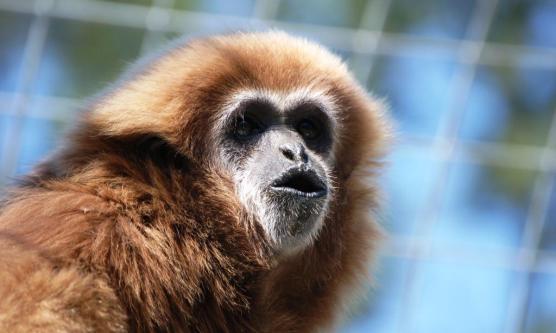Talking gibbonish

Gibbons are well known for their vocal expertise. In most species of gibbon, a mated male and female will duet loudly on a regular basis. Their songs can be heard up to a mile away, under the right conditions. This kind of communication is thought to help defend their territory and establish their presence as a mated couple, just as birds do.
But lately we have been learning that the gibbon repertoire is much broader and more nuanced than anything we were previously aware of. A recent article in the online journal BMC Evolutionary Biology reveals that the soft “hoo” calls of male and female white-handed gibbons made in the wild exhibit many subtle variations that vary with context. They gathered 462 “hoo” calls made by 14 males and 11 females living in northeastern Thailand.
These wild “hoo” calls may be heard when encountering predators (tiger, raptor, and leopard “hoos”), confronting neighbors, or searching for food. Analysis showed some interesting features—for example, only males appeared to give the “conflict-hoo,” and “raptor-hoos” were significantly lower in pitch than the other predator “hoos,” perhaps to escape auditory detection by predatory birds.
In another recent study of gibbon calls, gibbons were seen to use basic “words” and may even a simple kind of “grammar” to communicate, perhaps similar to the way our human ancestors did. (And perhaps it won’t surprise some people that female gibbons were observed to use more words than males!) Scientists looking at white-handed gibbons in a zoo setting found as many as 25 different “words” being used by these little apes. The researchers created algorithms to distinguish between sounds that might otherwise appear to be similar.
This year is the International Year of the Gibbon: it’s time to talk about gibbons! And maybe soon we’ll figure out what they’re saying when they talk back.


